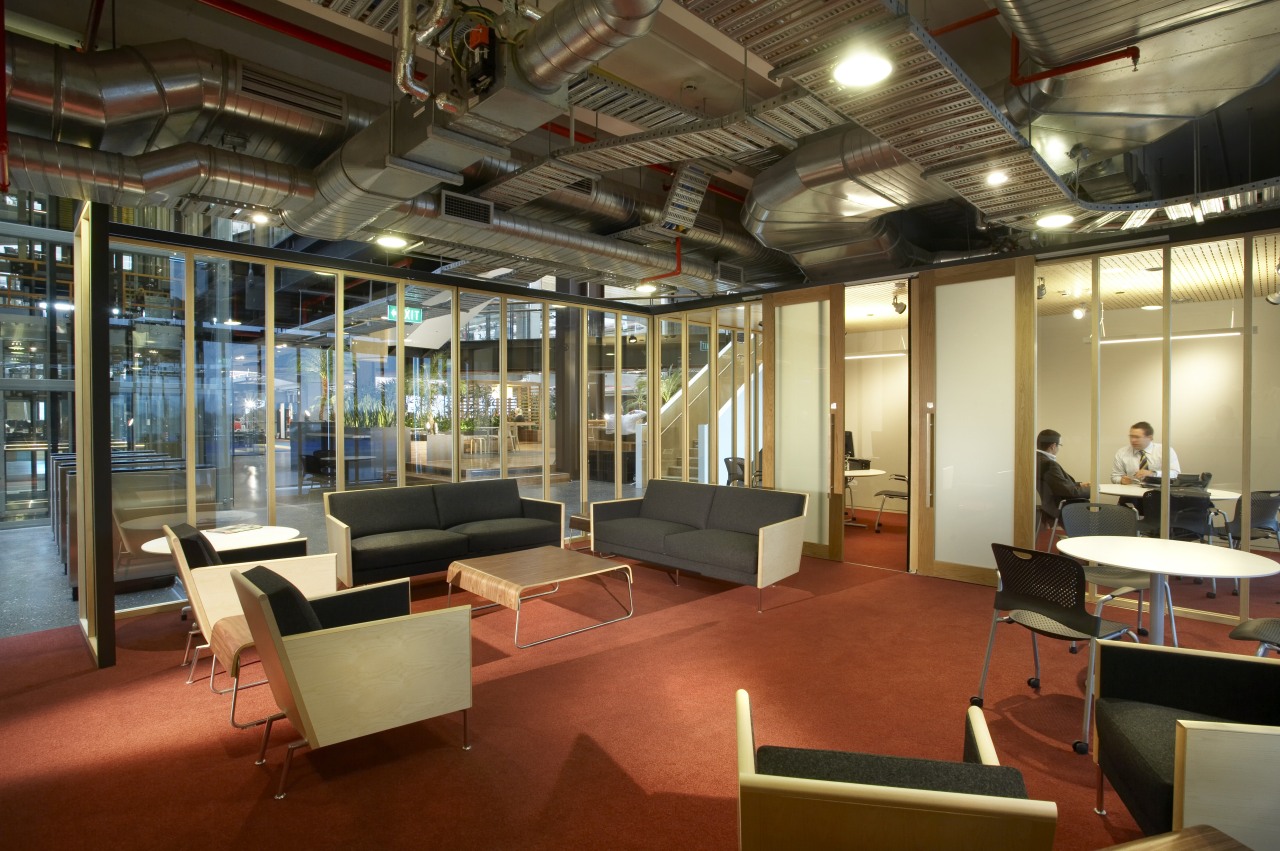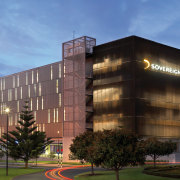Shape of things to come
A precursor of the new integrated delivery model that will define construction projects of the future, Sovereign House also sets a benchmark for sustainable office design

Many companies acquire office space and then shape their work environment to fit. For this project the design team took the opposite tack, designing a new building from the inside out.
Sovereign House Smales Farm was constructed by Mainzeal for Sovereign part of the ASB Group of Companies. Chris Boss of architecture team Bligh Voller Nield in association with Jasmax says the building reflects the client's people-focused philosophy.
"Sovereign recognises that its people are its greatest asset. The design grew from their requirements, and the need for a highly interactive environment that would enable a cross-pollination of ideas not just between department heads, but also between staff members."
Mainzeal chief operating officer Peter Gomm says the project foreshadows the new integrated delivery model that will be the way of the future for the construction industry.
"This model puts the focus firmly on the client's needs right from the start, to provide a much more sustainable and cost-effective solution," he says. "It also provides a certainty of outcome for the client."

Sovereign House Smales Farm, which has brought together staff from five different locations, is defined by its open, transparent work environment. A full-height atrium and voids provide visual links between five floors, effectively promoting the concept of an urban village. Open stairwells, glass lifts and bridges across the atrium further animate the space. Described by the architects as a fundamental shift forward in the way a building can be designed to suit the inhabitants, the interior was planned to encourage informal meetings and foster traditional face-to-face interaction and communication.
The building also sets a benchmark for sustainable design. In place of traditional air conditioning, it features multi-serviced chilled beam technology the air is heated or cooled by passing over the beams, which circulate heated or cooled water. Two skylights running the length of the building allow plenty of natural light into the building, helping to minimise artificial lighting and effectively transforming the atrium into a sun-dappled internal park. Energy savings are also provided by sunscreens on the building exterior, which limit solar gain and help prevent the interior overheating.
Mainzeal, as preferred contractor for the project, joined the project early during the design phase and project manager Murray Svendsen ensured Mainzeal staff formed close relationships with the design team. James Grose, principal architect in the architecture team Bligh Voller Nield in association with Jasmax, says the development and maintenance of good, honest and respectful relationships among the whole project team was a key factor in the project's success.
Numerous team-building functions were initiated by Mainzeal to continue with the partnering philosophy first introduced by ASB Property in the Project Plan that was developed at the outset. This philosophy resulted in early detection of some design issues that were able to be resolved prior to construction.
Because Sovereign's philosophy of transparency had been applied throughout the design, every element of the building was exposed and all concrete surfaces were visible, with no making-good permitted. This required the project team to develop methods of combining pre-cast and in situ concrete in a seamless junction that gave sharp detailed edges and a high-quality finish.
Svendsen says the use of multi-service chilled beams was new territory for all involved and required meticulous pre-planning and a long-term commissioning programme for each of the trades. In addition, with all building services exposed, including pipework, ductwork, cable trays and conduits on show, the setting out, alignment and co-ordination with the structure and finishes were critical.
Grose says he believes Sovereign House Smales Farm is the most advanced commercial project of its type in both New Zealand and Australia.
"It will be the benchmark for Australasian buildings, and will be at the forefront of new workplace buildings internationally. But most importantly, this is a building that puts people first. I believe this is a starting point for sustainability."
For details, contact Mainzeal Property & Construction, phone (09) 375 2100, fax (09) 375 2101. Email: mzakl@mainzeal.com. Website: www.mainzeal.com.
Story by: Trendsideas
Home kitchen bathroom commercial design
Connected to the ocean
Masculine meets mixed use
Contrast and connection






